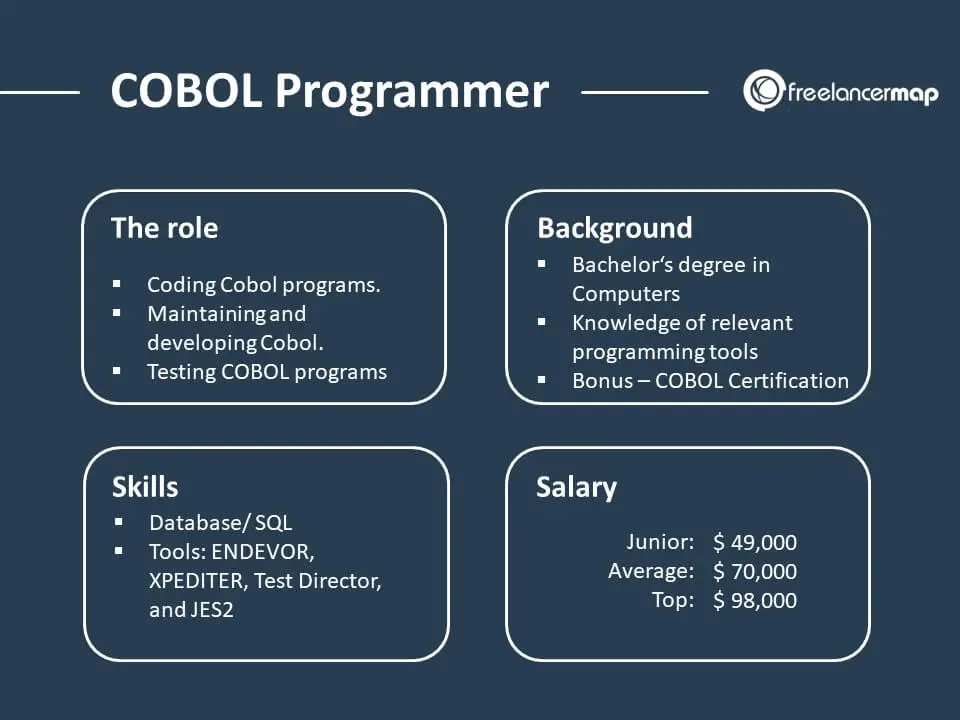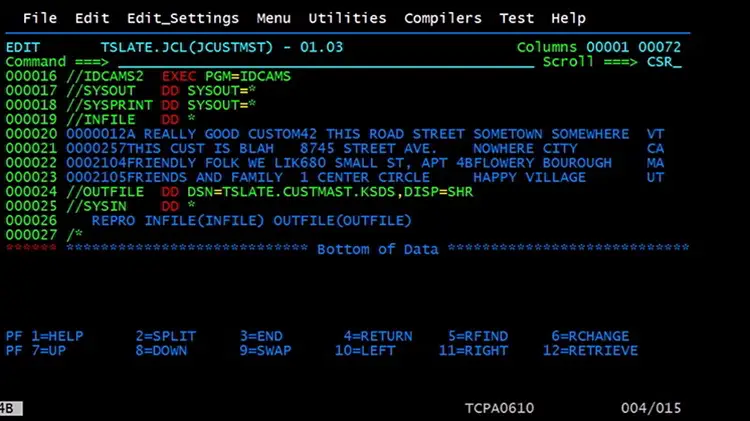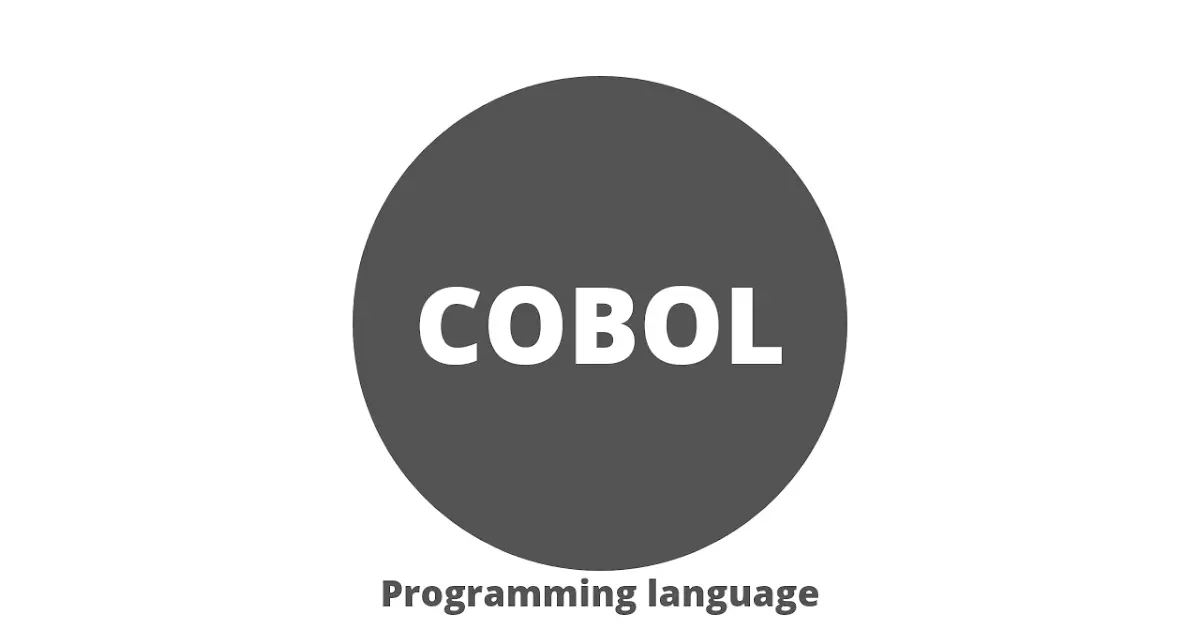The Landscape Before Cobol: Precarious Programming Practices

Before the advent of Cobol, the realm of business data processing was a convoluted landscape of rudimentary techniques. Programmers, burdened with complex calculations, would meticulously craft solutions using punch cards, the de-facto storage medium of the day. However, these delicate cards were prone to errors, often rendering hours of painstaking work futile.

The Dawn of Cobol: A Revolution in Business Programming

In the midst of this intricate environment, a revolutionary force emerged: Cobol. Introduced in 1959, Cobol was spearheaded by a group of forward-thinkers at the United States Department of Defense. Their ambitious goal was to develop a comprehensive language dedicated to handling complex business data processing tasks.
Ease of Use: Demystifying Programming
One of the key strengths of Cobol was its user-friendly syntax. Unlike other programming languages of the era, it was designed with simplicity and ease of use as its cornerstone. This focus on user-friendliness was a paradigm shift, making Cobol accessible to a broader range of individuals, including those without extensive technical expertise.
Expressiveness: Empowering Flexibility
Another defining attribute of Cobol was its expressiveness. It boasted a diverse array of features, enabling programmers to tackle a wide range of problems. This versatility made Cobol particularly suitable for complex financial and business applications, where precision and accuracy were paramount. Cobol’s flexible file-handling capabilities were particularly advantageous for manipulating large volumes of data.
Portability: Transcending Technological Barriers
One of Cobol’s most notable achievements was its portability. In an era where computers were vastly heterogeneous, Cobol remained steadfast in its ability to function flawlessly across a myriad of systems. This portability ensured that programs developed in Cobol could be executed on a multitude of platforms, providing businesses with a degree of investment security.
Longevity: An Enduring Force in Business Software
The enduring impact of Cobol lies in its longevity. Despite the relentless march of technological advancements, Cobol has remained a steadfast presence in the realm of business software. This testament to its enduring utility and widespread adoption across industries underscores its role as an indispensable tool for organizations across the globe.
In conclusion, the origins of Cobol lie in the need for a user-friendly, expressive, and portable programming language dedicated to business data processing. Its introduction in 1959 marked a turning point in the history of programming, simplifying complex tasks and empowering a broader range of individuals to actively participate in the digital transformation of business processes. Cobol’s enduring presence in the realm of business software stands as a testament to its enduring value, adaptability, and widespread adoption across industries, making it an indispensable tool for organizations seeking reliable and efficient data processing solutions.# The Origins of COBOL: Programming for Business
Executive Summary
COBOL (COmmon Business-Oriented Language) is a high-level programming language that was specifically designed for business applications. Initially developed in the late 1950s, COBOL revolutionized the way businesses processed data and facilitated the automation of complex business processes. This article delves into the origins, evolution, and enduring legacy of COBOL, highlighting its significant contributions to the world of programming and its continued relevance in modern business contexts.
Introduction
In the midst of the burgeoning computer era of the 1950s, there existed a pressing need for a programming language specifically tailored to the intricate requirements of the business world. Cobol emerged as a pioneer in this arena, addressing the unique challenges posed by business data processing. Cobol’s intuitive syntax, versatile capabilities, and adaptability across various platforms cemented its position as a cornerstone of business computing.
The Genesis of Cobol: A Response to Business Needs
The advent of electronic computers introduced unprecedented opportunities for businesses to streamline operations and enhance efficiency. However, the nascent programming languages of the time, primarily geared towards scientific and mathematical applications, proved inadequate for addressing the complexities of business data.
In response to this unmet need, a consortium of computer professionals, spearheaded by Grace Hopper, embarked on a mission to develop a language that would resonate with the unique demands of business. This collaborative effort culminated in the creation of Cobol, a language specifically designed to handle the complexities of business data processing.
Key Features of Cobol: A Language Built for Business
Cobol’s design principles were meticulously crafted to align with the specific requirements of business applications. Its defining features include:
-
High-level Abstraction: Cobol abstracts away the intricacies of computer hardware and low-level programming, enabling business professionals with limited programming experience to easily grasp and utilize the language.
-
Data-Centric Approach: Recognizing the centrality of data in business operations, Cobol places a strong emphasis on data structures and file handling, catering seamlessly to the diverse data requirements of businesses.
-
Structured Syntax: Cobol’s syntax mirrors the natural language constructs of human speech, mirroring the thought processes and structures inherent in business logic. This intuitive approach minimizes the learning curve and promotes code readability.
-
Comprehensive Library of Built-in Functions: Cobol boasts a rich collection of predefined functions that cater to a wide spectrum of business-specific tasks, such as date and time manipulation, financial calculations, and string handling. These functions greatly enhance programmer productivity and accelerate application development.
-
Portability and Longevity: Cobol’s adaptability across multiple platforms ensures that business applications developed using Cobol remain relevant and viable over extended periods, even as underlying hardware and software technologies evolve. This remarkable longevity is a testament to the language’s timeless design.
Evolution of Cobol: Keeping Pace with Changing Times
Cobol has undergone continuous evolution since its inception, adapting to the rapidly changing landscape of the computing industry. Notable milestones in Cobol’s evolution include:
-
Cobol 60: The initial version of Cobol, introduced in 1960, laid the foundation for subsequent iterations of the language.
-
Cobol 61: This 1961 revision introduced significant enhancements, including expanded data types, improved input/output capabilities, and the introduction of the COPY statement, which facilitated code reusability.
-
Cobol 65: Released in 1965, Cobol 65 marked a major milestone with the inclusion of table handling capabilities, greatly enhancing the language’s versatility for complex business applications.
-
Cobol 74: The 1974 Cobol standard introduced significant improvements in areas such as file handling, data structures, and program control, bolstering the language’s ability to address the growing complexity of business requirements.
-
Cobol 85: Cobol 85 expanded the language’s capabilities even further, introducing support for structured programming techniques, enhanced data types, and improved debugging facilities, solidifying Cobol’s position as a modern, robust programming language.
Enduring Legacy and Continued Relevance of Cobol: A Timeless Tool for Business
Despite the emergence of newer programming languages, Cobol retains a significant presence in the business world, owing to its enduring strengths and continued relevance:
-
Vast Installed Base: Cobol’s pervasive adoption over several decades has resulted in a substantial legacy of Cobol-based business applications. The sheer volume of these applications, coupled with the complexities and costs associated with migrating to newer technologies, ensures that Cobol will remain relevant for the foreseeable future.
-
Mission-Critical Applications: Cobol is often the language of choice for mission-critical business applications that handle sensitive data and perform essential business functions. Organizations are reluctant to replace these applications due to the high risks and potential disruptions involved.
-
Skilled Workforce: Over the years, a vast pool of skilled Cobol programmers has emerged, ensuring the availability of expertise required to maintain and enhance Cobol-based systems.
-
Robustness and Reliability: Cobol’s time-tested nature and proven track record of stability and reliability make it an ideal choice for applications that demand high


This is a great article! I learned a lot about the history of COBOL. I’m a programmer myself, and I find it fascinating to learn about the origins of the languages I use.
This article is full of errors. The author clearly doesn’t know what they’re talking about. I’m a COBOL programmer with over 20 years of experience, and I can tell you that this article is full of misinformation.
This article provides a good overview of the history of COBOL. However, it could be improved by providing more technical details about the language. For example, the author could discuss the different data types and control structures that are supported by COBOL.
I disagree with the author’s assessment of COBOL. I believe that COBOL is a powerful and versatile language that is still used by many businesses today. In fact, I use COBOL in my own business, and I find it to be a very effective language for developing business applications.
This article is a bit ironic. The author talks about how COBOL is a powerful language that is still used by many businesses today. But then the author goes on to say that COBOL is a dead language. I don’t understand how a language can be both powerful and dead at the same time.
This article is sarcastic from start to finish. The author clearly has a lot of pent-up anger towards COBOL. I understand that COBOL is not a perfect language, but it’s still a very useful language for many businesses.
This article is a funny read. The author does a great job of mocking COBOL. I have to admit, I don’t use COBOL myself, but I still found this article to be very entertaining.
I’m not sure what the author is trying to say in this article. They seem to be all over the place. One moment they’re praising COBOL, and the next moment they’re putting it down. I found this article to be very confusing.
This article is well-written and informative. I learned a lot about the history of COBOL. I would recommend this article to anyone who is interested in learning more about the origins of programming languages.
This article is biased and inaccurate. The author clearly has a personal vendetta against COBOL. I would not recommend this article to anyone who is interested in learning more about the history of programming languages.
This article is very basic and superficial. It only scratches the surface of the history of COBOL. I would not recommend this article to anyone who is interested in learning more about the history of programming languages.
I disagree with the author’s opinion about COBOL. I believe that COBOL is a powerful and versatile language that is still used by many businesses today.
This article is full of factual errors. I would not recommend this article to anyone who is interested in learning more about the history of programming languages.